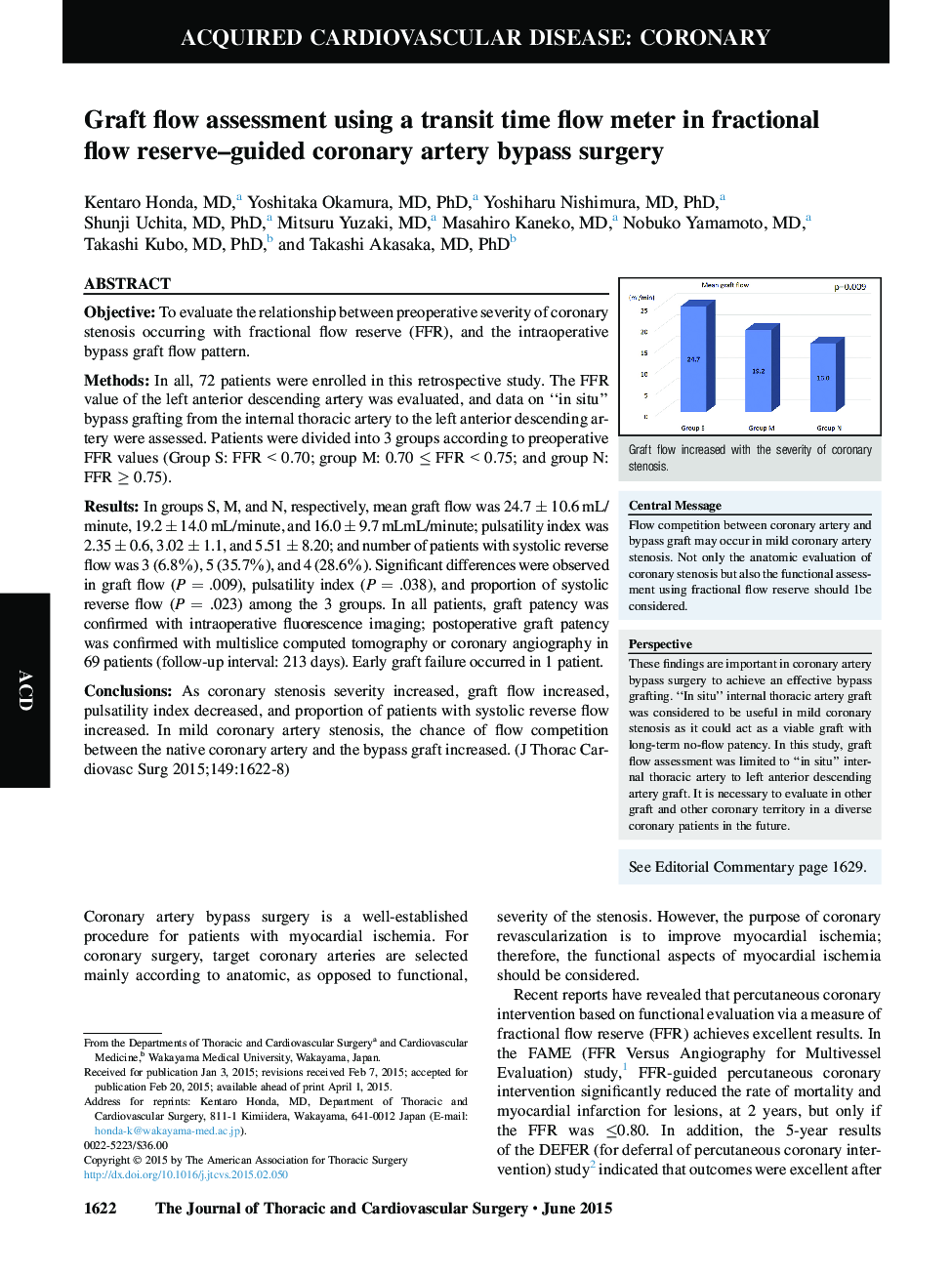| Article ID | Journal | Published Year | Pages | File Type |
|---|---|---|---|---|
| 5989139 | The Journal of Thoracic and Cardiovascular Surgery | 2015 | 7 Pages |
ObjectiveTo evaluate the relationship between preoperative severity of coronary stenosis occurring with fractional flow reserve (FFR), and the intraoperative bypass graft flow pattern.MethodsIn all, 72 patients were enrolled in this retrospective study. The FFR value of the left anterior descending artery was evaluated, and data on “in situ” bypass grafting from the internal thoracic artery to the left anterior descending artery were assessed. Patients were divided into 3 groups according to preoperative FFR values (Group S: FFR < 0.70; group M: 0.70 ⤠FFR < 0.75; and group N: FFR ⥠0.75).ResultsIn groups S, M, and N, respectively, mean graft flow was 24.7 ± 10.6 mL/minute, 19.2 ± 14.0 mL/minute, and 16.0 ± 9.7 mLmL/minute; pulsatility index was 2.35 ± 0.6, 3.02 ± 1.1, and 5.51 ± 8.20; and number of patients with systolic reverse flow was 3 (6.8%), 5 (35.7%), and 4 (28.6%). Significant differences were observed in graft flow (P = .009), pulsatility index (P = .038), and proportion of systolic reverse flow (P = .023) among the 3 groups. In all patients, graft patency was confirmed with intraoperative fluorescence imaging; postoperative graft patency was confirmed with multislice computed tomography or coronary angiography in 69 patients (follow-up interval: 213 days). Early graft failure occurred in 1 patient.ConclusionsAs coronary stenosis severity increased, graft flow increased, pulsatility index decreased, and proportion of patients with systolic reverse flow increased. In mild coronary artery stenosis, the chance of flow competition between the native coronary artery and the bypass graft increased.
